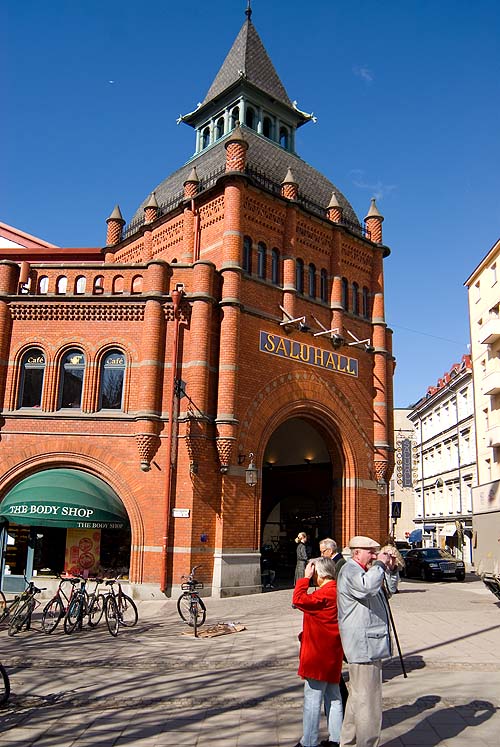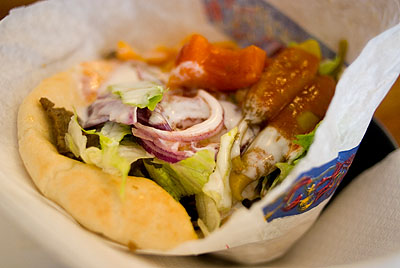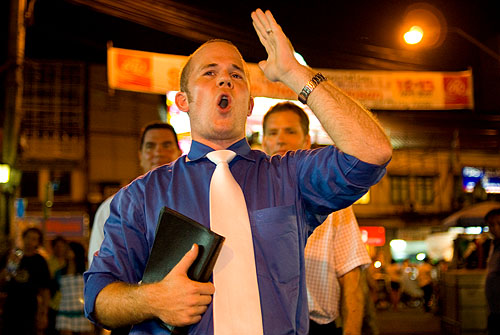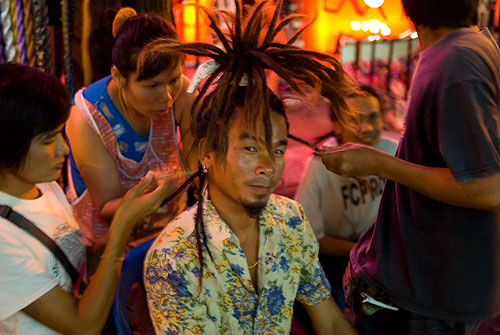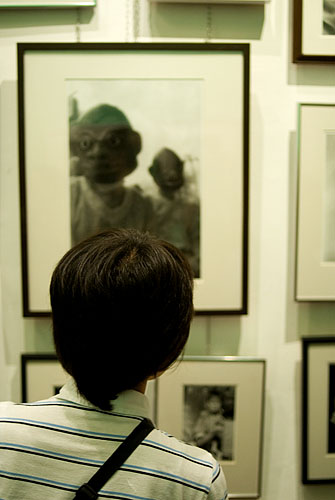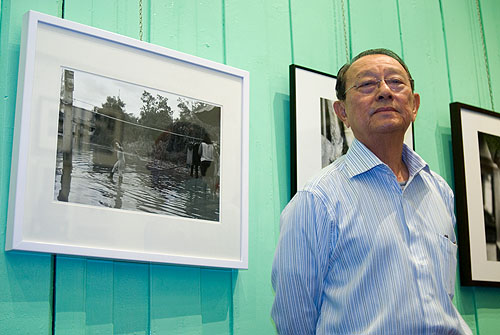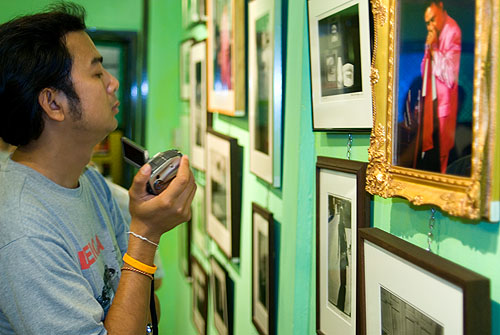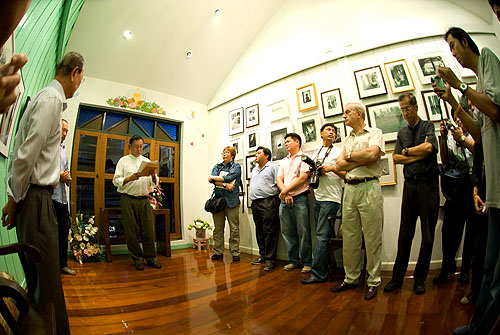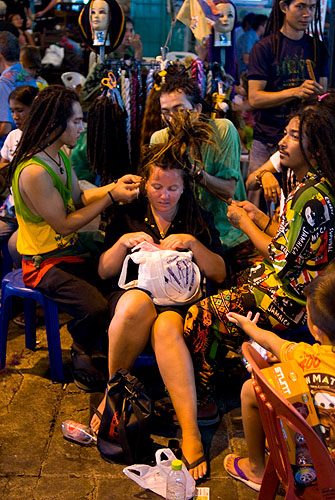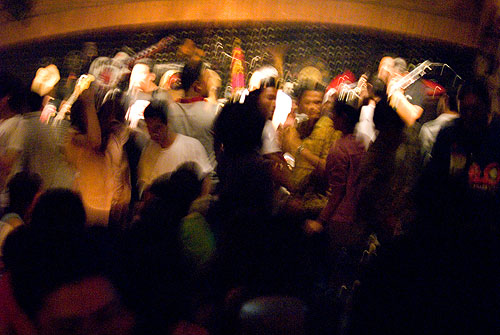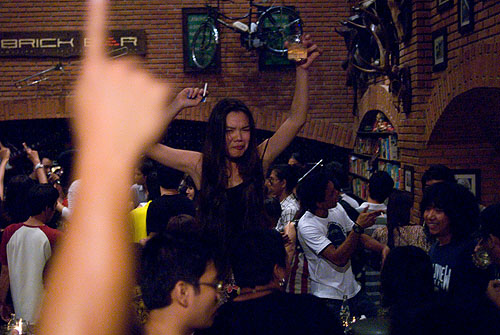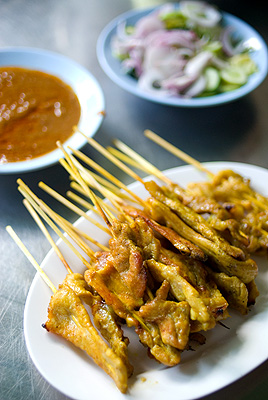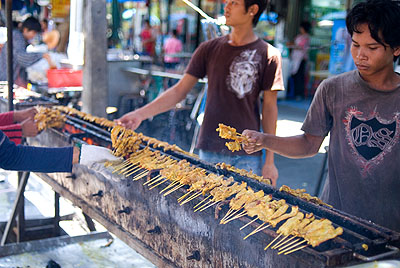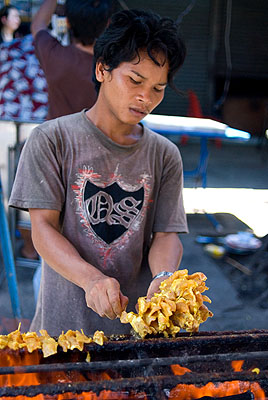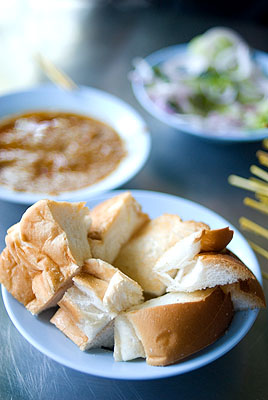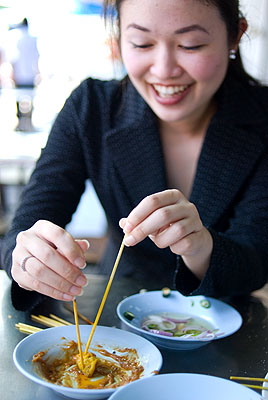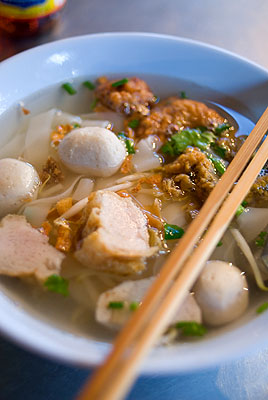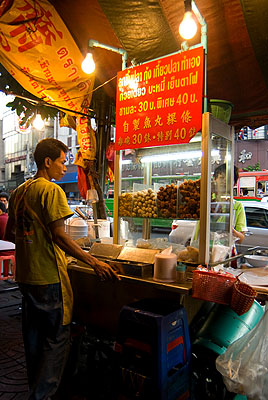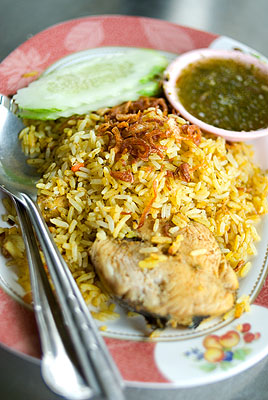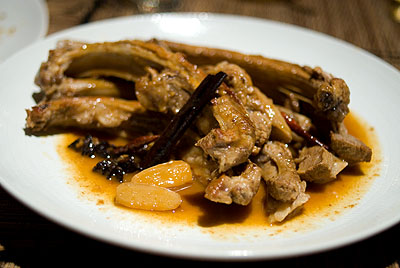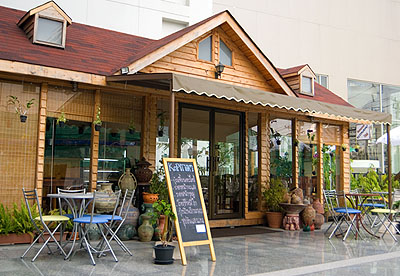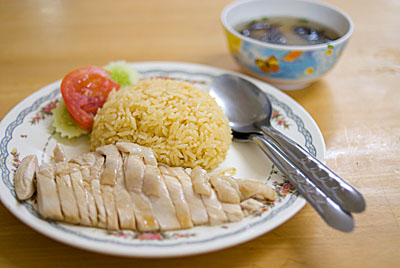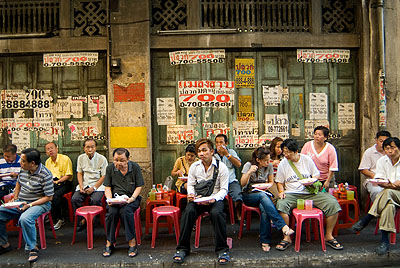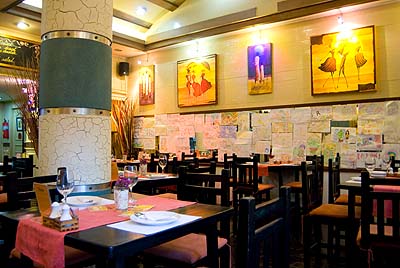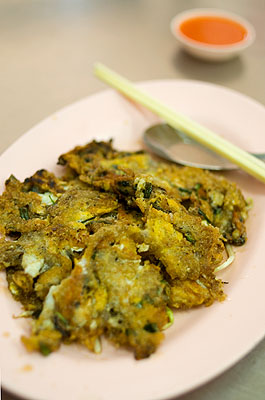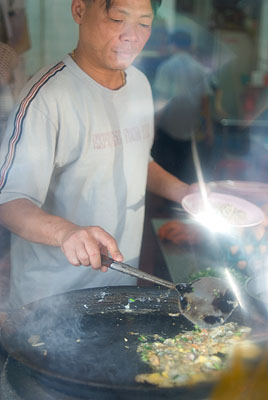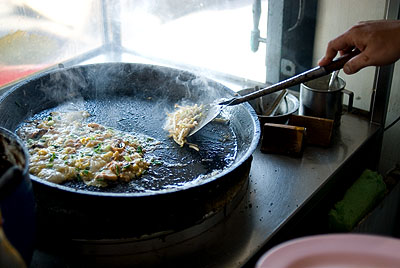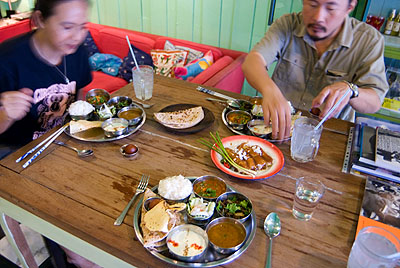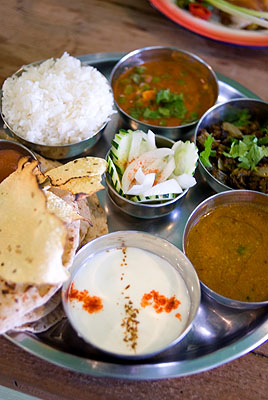I'm in the process of interviewing some locals for an upcoming Lonely Planet book and chose to profile Suthon Sukphisit, author of the Bangkok Post's weekly Thai food column, Cornucopia. I've been reading Cornucopia for years, and always thought Suthon must be the closest thing to a living encyclopedia on Thai food. I wanted to pick his brain about Chinatown, an area known for its food, and he was kind enough to meet me and show me around for a few hours last night. I've been to Chinatown many times, but going with Suthon was a truly eye-opening experience. He seems to be familiar with literally every tiny alley and side street, and took me to and pointed out some of his favourite food-related places.
Our first stop was the subject of one of Suthon's numerous articles; an ancient house where a man named Thot is the second generation of his family to make kun chiang, Chinese-style sausage:
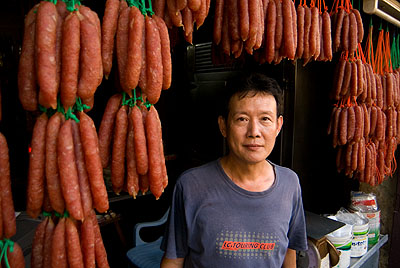
Khut Thot still makes sausages by hand in the same place his parents did--an ancient Chinese shophouse on Thanon Plaeng Naam, the very house he grew up in:

After mixing "good quality" pork with spices, he stuffs the casings and hangs them in a locker over warm coals:

After a few hours of this, he'll move them to another locker where they'll dry for a day. The sausages are done at this point, but still need to be cooked before you can eat them. Khun Thot was kind enough to give me a bag of his kun chiang, which I'm really looking forward to trying.
Just a few steps away is a famous vendor selling khanom jeep, Chinese steamed dumplings:

This vendor has gained a reputation for making the dim sum-style snack by hand using a traditional recipe, something he claims to have done for 50 years! He starts selling at lunch, and will remain on the street until he's sold everything:

Served with a light soy sauce and deep-fried crispy garlic, the khanom jeep were delicious, and a world away from the recently-thawed, oily, tasteless clumps you'll find elsewhere. And later, in a backstreet scene reminiscent of medieval Europe, we even got a glance of how the dough wrappers are still made using traditional methods:

Khanom Jeep Wat Yuan
Thanon Plaeng Nam (sold from a cart in front of Chinese temple)
12pm-7pm
Heading up towards Thanon Mangkorn we passed by a famous curry shop called Jay Puy. On the surface, it looks like any other street side curry shop in Bangkok, and I'd walked by it several times without noticing anything in particular. However Suthon pointed out one quirky aspect:

Jay Puy has no tables--something that Suthon claims has no impact on the number of people who eat there. "In the rainy season they don't have a roof or umbrella," says Suthon, "but people still eat there!" The shop is known for kaeng karii, literally "curry", but a Chinese take on the Indian/Thai dish. Suthon explained that the curries here aren't as thick or as spicy as the Thai version, and that they are thickened with flour, as not to be so oily.
Jay Puy Curry Shop
Corner of Thanon Mangkorn and Charoen Krung
4pm-9pm
Our evening ended at a tiny, dark alley off of Thanon Plaeng Naam where Suthon wanted to take me to Jay Joo, one of his favourite restaurants in Chinatown, and a place he described as being more Chinese than Thai:

"Real Chinese food has to made over a very, very hot flame," explained Suthon. As seen above, Jay Joo's coal-burning stoves were indeed very hot, and Suthon ordered plaa kiam buay, a deep-fried fish served in sour broth of salted plums and ginger; tao hoo song khrueang, deep-fried tofu served in a thick sauce with veggies; and kung kap plaa muek phat nam phrik phao, fresh shrimp and pickled squid fried in chili paste:

Everything was outstanding, and coupled with the exotic atmosphere (a huge family eating nearby, rats underfoot) and a few cans of Singha, made a memorable meal that topped off a truly memorable evening.
Jay Joo
Soi Phiphaksaa 2 (located roughly between Thanon Plaeng Naam and Thanon Phadung Dao)
4pm-7pm














